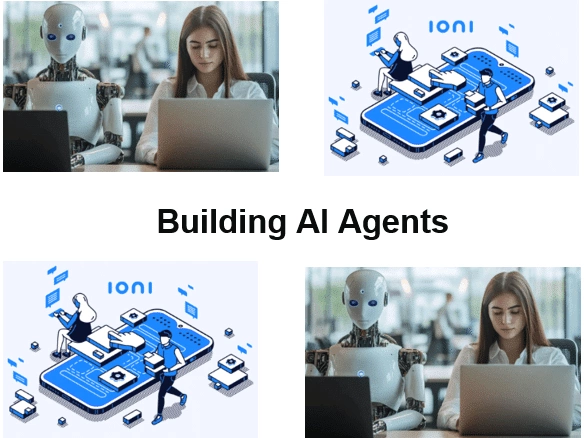-
Learning by doing
-
Trainers with practical experience
-
Classroom training
-
Detailed course material
-
Clear content description
-
Tailormade content possible
-
Training that proceeds
-
Small groups
The course Building AI Agents from SpiralTrain teaches you to build intelligent AI agents that reason, act, and collaborate autonomously. You’ll work with tools like LangChain and CrewAI, explore agent memory, workflows, and real-world use cases, and dive into the future of AI agent ecosystems.
The course begins with a look at what AI agents are, how they differ from chatbots, and their core components like autonomy and decision-making. It covers LLMs as reasoning tools, agent frameworks like LangChain, memory usage, tools, and common challenges.
This module explores the LangChain architecture. Topics include chains vs agents, templates, memory modules, document loaders, streaming output, tool integration, and how to debug agents using LangSmith.
Learn to create your first AI agent by choosing a model, setting goals, integrating tools, managing memory, and writing effective prompts. Also covered: error handling, multi-step tasks, personality, and monitoring output.
Participants explore collaboration between agents using frameworks like CrewAI and Autogen. The module covers roles, messaging, goal refinement, workflow monitoring, task decomposition, and evaluation techniques.
Dive into real-world applications like coding assistants, customer service bots, finance and research agents, enterprise tasks, web deployment, Slack integration, and analytics to assess impact and improve performance.
The course ends with trends in AI agents—self-improvement, real-time sensing, ethical concerns, memory growth, regulation, and human-agent teamwork. It also looks at future marketplaces and safety controls.
The course Building AI Agents is intended for software developers, data scientists, and AI practitioners who want to learn how to design autonomous agents using LLM's.
To participate in this course, a basic understanding of Python programming and machine learning concepts is required. Familiarity with APIs and prompt engineering is useful.
The course is conducted under the guidance of the trainer, combining theory with hands-on exercises. Real-world examples and practical case studies are used throughout the training.
After successfully completing the course, participants will receive a certificate of participation in Building AI Agents.

Module 1: Intro AI Agents |
Module 2: LangChain Fundamentals |
Module 3: Building First Agent |
|
What is an AI agent? Core Components Autonomy and Decision Making Agents vs Chatbots Key Frameworks (LangChain, Auto-GPT) LLMs as Reasoning Engines Tools and APIs Role of Memory Agent Use Cases Challenges and Risks |
LangChain Architecture Chains and Agents Prompts and Templates Tool Integrations Document Loaders Memory Modules Output Parsers Streaming Output Agent executors LangSmith for Debugging |
Choosing an LLM Defining Goals and Actions Using Tools (search, calculator) Writing Prompts for Agents Handling Errors and Retries Adding Personality Managing State and Memory Multi-step Tasks Logging and Monitoring Sandbox Environments |
Module 4: Multi-Agent Systems |
Module 5: Agent Use Cases |
Module 6: Future of AI Agents |
|
Collaboration Between Agents CrewAI and Autogen Overview Roles and Responsibilities Message Passing between Agents Task Decomposition Goal Refinement Monitoring Progress Conflict Resolution Complex Workflows Evaluation Strategies |
Coding Assistant Research Assistant Personal Finance Agent Enterprise Task Agent AI Bots for Customer Support Integrating with Slack/Teams Running on the Web Continuous Learning Agents Logging and Analytics Measuring Impact |
Self-Improving Agents Memory Evolution Real-time Environment Sensing AI Decision Making Simulated Personalities Ethics and Control Guardrails and Safety Regulation Implications Agent Marketplaces Agent + Human Collaboration |
